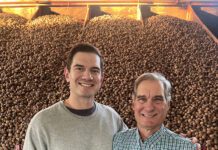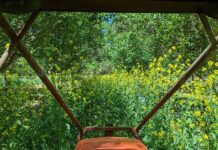
Disposing of empty pesticide containers can be a persistent challenge for growers, but following proper recycling and rinsing standards can help keep operations compliant and environmentally responsible. That was the message from Brad Bittleston, president of Interstate Ag Plastics, who spoke at the 2025 Crop Consultant Conference about container recycling requirements and best practices.
Since 2006, Interstate Ag Plastics has recycled roughly 35 million pounds of agricultural containers across California, Arizona and Nevada, working with growers, applicators and local agencies to simplify disposal and ensure materials are reused safely. The company’s goal is to take something that once piled up behind the shop and ensure it is processed correctly and turned into something useful again.
“We try to keep the farmers headache-free,” Bittleston said.
Interstate Ag Plastics began as part of a crop-dusting business out of Buttonwillow, Calif., where Bittleston saw firsthand the growing difficulty of disposing of pesticide containers. When counties stopped allowing landfilled plastic, he and his team launched a dedicated recycling service.
Today, the company partners with county agricultural departments, public works agencies and the Ag Container Recycling Council (ACRC) to hold public collection events in Glenn, Butte, Fresno, Merced, Ventura, Imperial and other counties. Each event allows growers and applicators to bring in rinsed containers for free recycling.
“Every county handles it a little differently,” Bittleston said, explaining that some use cotton trailers while others designate drop-off sites at the ag commissioner’s office.
But what matters most is that containers arrive clean, dry and punctured.
Triple-Rinse and Puncture
Since 1995, national standards developed by the EPA and the ACRC have governed pesticide container recycling. Those guidelines specify that nonrefillable, rigid high-density polyethylene (HDPE) containers up to 55 gallons can be recycled, provided they are triple-rinsed or pressure-rinsed immediately after use.
“The standard says containers must be 99.9% clean,” Bittleston said. “If you can put on a black glove and wipe residue off, it’s not clean.”
Growers should remove caps, liners, foil seals and labels, then puncture containers to prevent reuse. In California, applicators are also encouraged to write the date the container was emptied, though enforcement is limited.
Containers with visible residue, moisture or chemical odor may be rejected at collection sites, costing everyone time and money.
What Happens After Collection
Once containers are approved and loaded, they’re taken to one of Interstate Ag Plastics’ mobile processing trucks, where the plastic is ground, bagged and shipped for reuse. Each “super sack” holds about 1,800 pounds of HDPE chips, which are repurposed into agricultural drainpipe, fence posts, composite pallets, nursery pots, landscape edging and other regulated industrial products.
“We don’t send it into mainstream consumer plastics,” Bittleston said. “It’s kept within agriculture and other controlled uses.”
The company currently recycles 2.5 to 3 million pounds of plastic each year, diverting materials from landfills and supporting ACRC’s national stewardship program. Since its founding in 1992, council members have helped recycle more than 260 million pounds of agricultural plastic across the United States, the equivalent of saving more than 1.3 million cubic yards of landfill space.
Training and Resources for Growers
Bittleston encouraged growers and farm managers to take advantage of free training materials available through Interstate Ag Plastics and ACRC. These include poster guides for rinsing best practices, inspection checklists and instructional videos that can be used for employee training.
“Every ounce of chemical left in a container is something you’ve already paid for,” he noted. “Rinse it out, reuse that product, and you’re not only compliant, you’re saving money.”
For more information or to find a container recycling event in your area, visit agrecycling.org or contact Interstate Ag Plastics at interstateagplastics.com.

Kristin Platts | Digital Content Editor and Social Correspondence
Kristin Platts is a multimedia journalist and digital content writer with a B.A. in Creative Media from California State University, Stanislaus. She produces stories on California agriculture through video, podcasts, and digital articles, and provides in-depth reporting on tree nuts, pest management, and crop production for West Coast Nut magazine. Based in Modesto, California, Kristin is passionate about sharing field-driven insights and connecting growers with trusted information.















